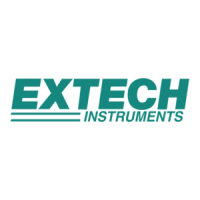15 VFL Series User Manual v2.3 12/20
6.6 Pulsed DC Trigger Option
The optional DC Trigger supplies a 24V pulse (ON: 24V; OFF: 0V), it is not linear, as is the 4-
20mA analog output. The screw connecting terminals are the same terminals that are used for
the relay outputs. See the Wiring section for rear-terminal designations. The ON-OFF and PID
Time Proportioning control methods, explained below, apply to relay as well as DC Trigger
control.
Caution: With DC Trigger installed in your controller do not wire an external AC or DC voltage
signal to the DC Trigger terminals.
6.7 Analog Output Option
With the analog output option, the controller supplies 4-20mA to the process. Up to two 4-20
outputs can be installed (see the Wiring section for rear-terminal designations). The controller
regulates the analog outputs to bring the process (PV) to setpoint (SV).
To use the analog output, ensure that ‘Cycle Time’ (‘Ct’ in Menu 3, PID) is set to ‘0’
6.8 ON-OFF Control
ON-OFF is the simplest form of control, where the controller output is OFF at setpoint and ON
away from setpoint. To use ON-OFF control, set the ‘Pb’ or ‘CPB’ parameter (Menu 3, PID) to
‘0’. Use the Hysteresis setting ‘Hyst’ to create a ‘dead band’ around the setpoint to minimize
relay chatter. These are also found in Menu 3, PID.
FIGURE 6.1: ON-OFF COOLING AND HEATING CONTROL EXAMPLES
6.9 PID Control
ON-OFF control cannot be used for processes where setpoint overshoot or process oscillations
are not acceptable and may cause damage to the materials in the process. For more precision,
PID control is necessary. PID has three elements:
Proportional control (‘Pb’ parameter in Menu 3, PID)
Integral time (‘ti’ parameter in Menu 3, PID)
Derivative time (‘td’ parameter in Menu 3. PID)

